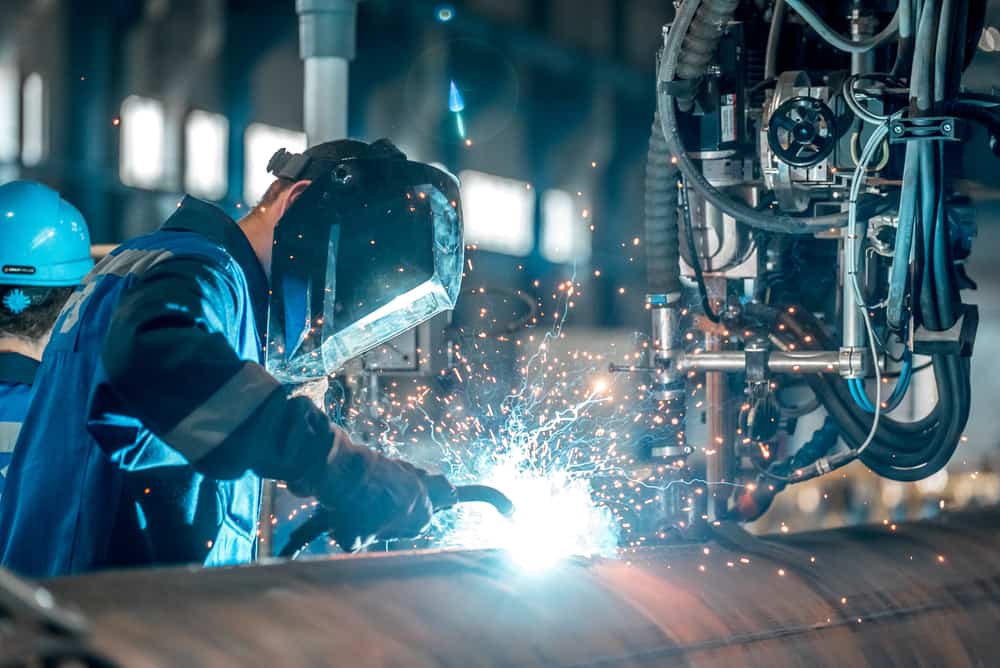
The manufacturing industry is facing an unprecedented shortage of skilled welders. The aging workforce of skilled welders and a growing trend among millennials to choose career options away from manual labor have reduced the number of new welders entering the industry.
Investing in welding technology and deploying automation solutions can provide an effective way for manufacturers to address the skilled welder shortage and scale welding applications across various sectors.
Below, we discuss how automation can bridge the gap between the rise in welding applications and the limited availability of skilled welders. We’ll also explore the benefits and challenges of implementing automation in welding.
Addressing Skilled Welder Shortage with Automation
Manual welders are invaluable to industries, such as shipbuilding, aviation, oil and gas, semiconductor, pharmaceuticals, food and beverage, and thermal power. High-specification and critical projects in these industries require specific safety, hygiene, and purity standards to prevent errors. The Gas Tungsten Arc Welding (GTAW) process is particularly suitable for low-tolerance environments because it enables precise and consistent welds. Weld strength and purity can be ensured by carefully controlling inert shielding gas to prevent oxidation or other forms of contamination during welding.
However, the manual GTAW process is complex and difficult to learn. Although the GTAW process offers a higher degree of control over amperage and weld by facilitating the deployment of the weld head and power supply, welder expertise is necessary to achieve proper arc length control and ensure weld consistency and quality. Even for experienced GTAW welders, eliminating the start/stop areas when they have rested the arc during repositioning is difficult. Such areas are prone to corrosion due to the extended thermal cycle. The challenge of finding manual welders who have mastered the GTAW process can be overcome with automated GTAW orbital welding.
Benefits of Automation in Welding
The benefits of automation in welding rely on advanced equipment that significantly improves the manual welding process and allows welders to continue creating welds with a reduction in or without stopping or restarting. Listed below are a few key advantages of deploying automation in complex welding processes such as GTAW.
- Purity: Automation offers a sanitized welding environment by providing adequate gas coverage around the weld zone to prevent contamination from atmospheric oxygen, hydrogen, or nitrogen. As a result, manufacturers can expect high-quality, pure welds.
- Consistency: In GTAW orbital welding, the weld head moves steadily and consistently, reducing or eliminating the start/stop areas that otherwise are created during repositioning in manual welding.
- Improved Productivity and Safety: In high-specification projects, material wastage and rework caused by weld errors can significantly impact productivity. Automation improves productivity and cost savings by minimizing welding errors caused by fatigue and creating a safe work environment for welders.
With such benefits, orbital welding may seem like an obvious solution to address the skilled welder shortage and ensure high-quality welds with less training and experience on the welder’s part. However, automation has its challenges.
Challenges of Implementing Automation in the Welding Industry
While implementing automation in welding, manufacturers need to consider the initial investment and setup costs. Compared to manual welding systems, automated welding equipment requires a higher initial investment where machine flexibility introduces a critical element in price determination. The shift from a labor-intensive to capital-intensive welding process also demands preventive maintenance plans to avoid the risks of costly downtime during full-scale production.
Additionally, welding automation still requires the new and younger workforce to develop knowledge and skill to operate and maintain the welding equipment. Though the objective of automation is the ease of usage to compensate for the expertise of skilled welders, new professionals still need to be trained to read the basic welding parameters such as molten puddle.
Training Opportunities at Arc Machines, Inc.
Arc Machines, Inc. offers training programs that can help you introduce welding automation while improving the skills and expertise of new welders. Our advanced automated orbital welding equipment, including weld heads, power supplies, and turn-key welding systems, are designed to meet industry-specific standards for outstanding weld quality across a wide range of applications.
Arc Machines, Inc. is an industry leader with the expertise and equipment to help you address the skilled welder shortage and implement welding automation technologies. For inquiries regarding our advanced orbital welding machines, contact sales@arcmachines.com. For service inquiries, contact service@arcmachines.com.




